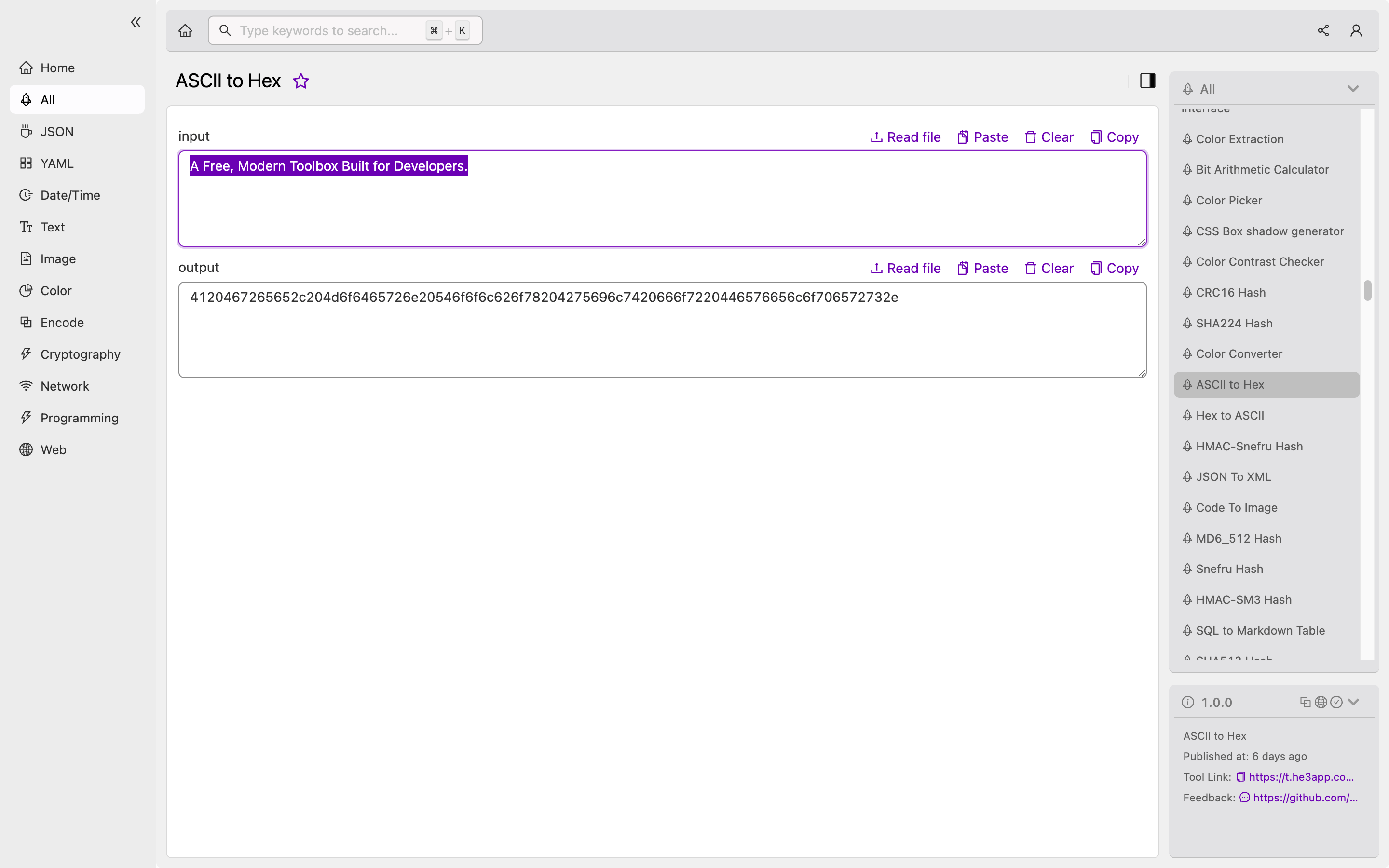Understanding ASCII to Hex Conversion
ASCII to Hex conversion is one of the essential aspects of data representation for developers. It converts an ASCII (American Standard Code for Information Interchange) value to a hexadecimal (Hex) value. In this article, we will discuss the concept and functionality of ASCII to Hex conversion, common misconceptions, and some scenarios where developers use it.
What is ASCII to Hex Conversion?
ASCII is a standard used to represent text as a series of seven-bit binary digits. It uses 128 characters, including letters, numbers, and special characters. On the other hand, Hexadecimal (Hex) is a base-16 numeral system that uses sixteen symbols to represent values from 0 to 15.
ASCII to Hex conversion is the process of converting an ASCII value to a Hexadecimal (Hex) value. The ASCII value is first converted into binary, and then, each four bits of the binary value are converted into their corresponding hexadecimal value.
How Does ASCII to Hex Conversion Work?
The conversion process of ASCII to Hex is straightforward, and it can be done using basic tools or programming languages. Here is a sample code in Python to convert a string to its corresponding Hex value:
string = "ASCII to Hex"
hex_value = string.encode("utf-8").hex()
print(hex_value)This code converts the string “ASCII to Hex” into its corresponding Hex value of 415343494920746f20486578. Alternatively, you can use ASCII to Hex tool in the He3 Toolbox (https://t.he3app.com?bsvc) easily.

Scenarios of Using ASCII to Hex Conversion
ASCII to Hex conversion is commonly used in network protocols, data transmission, and cryptographic systems. For instance, it is used in securing passwords by converting text passwords to hexadecimal values. Developers also use this conversion to store data in databases, where data is stored in Hexadecimal format. Moreover, it can be useful for debugging communication protocols between devices.
Key Features of ASCII to Hex Conversion
Here are some key features of ASCII to Hex conversion:
- It converts ASCII values to a more compact and easy-to-read format.
- It is used in network protocols, data transmission, and cryptographic systems.
- It is a simple and straightforward process that can be done using basic programming languages.
- It is widely used in data storage and debugging communication protocols.
Common Misconceptions and FAQs
1. Does ASCII to Hex Conversion change the actual value of data?
No, ASCII to Hex conversion does not change the actual value of data. It just represents the data in a different format.
2. Can ASCII to Hex Conversion be reversed?
Yes, ASCII to Hex conversion can be reversed by converting the Hexadecimal value back to its corresponding ASCII value.
In conclusion, ASCII to Hex conversion is a crucial aspect of data representation for developers. It converts ASCII values into Hexadecimal values, making it easier to represent and store data. It is widely used in network protocols, data transmission, and cryptographic systems. If you want to learn more about ASCII to Hex conversion, you can visit the Wikipedia page (https://en.wikipedia.org/wiki/Hexadecimal).
